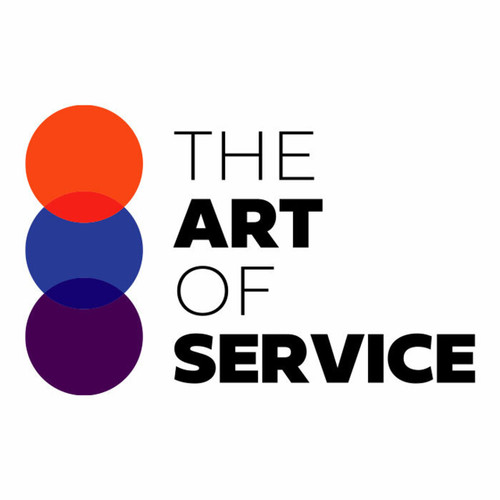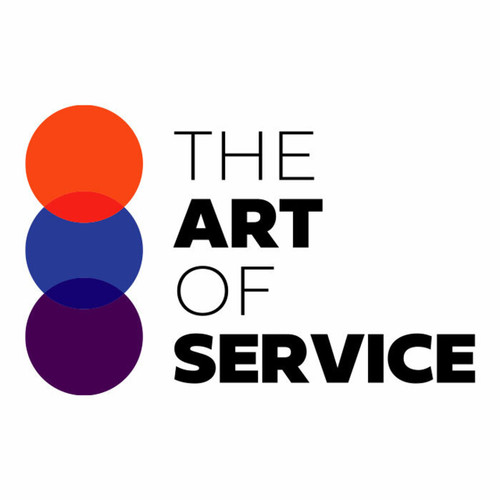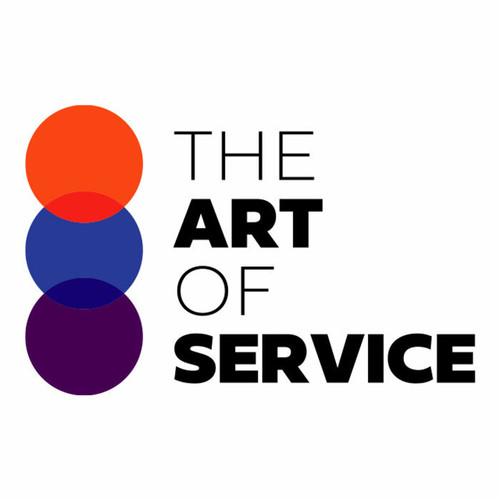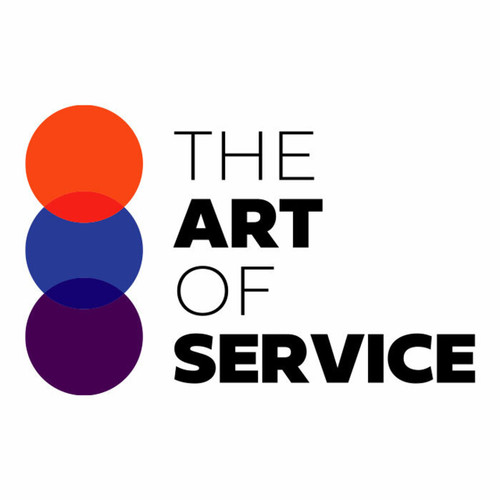Are you tired of spending hours searching for the right questions to ask when it comes to getting results quickly and efficiently? Look no further, because our Deep Learning and High Performance Computing Knowledge Base has you covered!
Our dataset contains 1524 prioritized Deep Learning and High Performance Computing requirements, solutions, benefits, and real-world case studies/use cases – everything you need to accelerate your projects and deliver outstanding results.
With a strong focus on urgency and scope, our Knowledge Base ensures that you are asking the most important questions to achieve your goals in record time.
But what sets us apart from competitors and alternatives? Our Deep Learning and High Performance Computing dataset is specifically tailored for professionals like you, providing you with targeted and relevant information that other general resources may lack.
And not only that, our product is affordable and DIY – no need to hire expensive experts or consultants.
It′s a one-stop-shop for all your Deep Learning and High Performance Computing needs.
With a user-friendly interface and detailed specifications overview, our Knowledge Base allows you to quickly and easily access the information you need, saving you time and effort.
Plus, our product is constantly updated with the latest research on Deep Learning and High Performance Computing, ensuring that you have access to the most cutting-edge techniques and strategies.
But don′t just take our word for it – businesses of all sizes have seen significant improvements in their projects and operations after using our Deep Learning and High Performance Computing Knowledge Base.
As for cost, we offer a cost-effective solution that pays for itself in the long run through increased efficiency and productivity.
It′s important to weigh the pros and cons of any product, but we are confident that the benefits of our Knowledge Base far outweigh any drawbacks.
With detailed information and practical examples at your fingertips, you can trust that your Deep Learning and High Performance Computing projects will be a success.
In summary, our Deep Learning and High Performance Computing Knowledge Base is your ultimate tool for success in this rapidly growing field.
Say goodbye to endless searching and guesswork, and hello to efficient and effective results.
Don′t miss out – get your hands on our Knowledge Base today and unlock the full potential of Deep Learning and High Performance Computing!
Discover Insights, Make Informed Decisions, and Stay Ahead of the Curve:
Key Features:
Comprehensive set of 1524 prioritized Deep Learning requirements. - Extensive coverage of 120 Deep Learning topic scopes.
- In-depth analysis of 120 Deep Learning step-by-step solutions, benefits, BHAGs.
- Detailed examination of 120 Deep Learning case studies and use cases.
- Digital download upon purchase.
- Enjoy lifetime document updates included with your purchase.
- Benefit from a fully editable and customizable Excel format.
- Trusted and utilized by over 10,000 organizations.
- Covering: Service Collaborations, Data Modeling, Data Lake, Data Types, Data Analytics, Data Aggregation, Data Versioning, Deep Learning Infrastructure, Data Compression, Faster Response Time, Quantum Computing, Cluster Management, FreeIPA, Cache Coherence, Data Center Security, Weather Prediction, Data Preparation, Data Provenance, Climate Modeling, Computer Vision, Scheduling Strategies, Distributed Computing, Message Passing, Code Performance, Job Scheduling, Parallel Computing, Performance Communication, Virtual Reality, Data Augmentation, Optimization Algorithms, Neural Networks, Data Parallelism, Batch Processing, Data Visualization, Data Privacy, Workflow Management, Grid Computing, Data Wrangling, AI Computing, Data Lineage, Code Repository, Quantum Chemistry, Data Caching, Materials Science, Enterprise Architecture Performance, Data Schema, Parallel Processing, Real Time Computing, Performance Bottlenecks, High Performance Computing, Numerical Analysis, Data Distribution, Data Streaming, Vector Processing, Clock Frequency, Cloud Computing, Data Locality, Python Parallel, Data Sharding, Graphics Rendering, Data Recovery, Data Security, Systems Architecture, Data Pipelining, High Level Languages, Data Decomposition, Data Quality, Performance Management, leadership scalability, Memory Hierarchy, Data Formats, Caching Strategies, Data Auditing, Data Extrapolation, User Resistance, Data Replication, Data Partitioning, Software Applications, Cost Analysis Tool, System Performance Analysis, Lease Administration, Hybrid Cloud Computing, Data Prefetching, Peak Demand, Fluid Dynamics, High Performance, Risk Analysis, Data Archiving, Network Latency, Data Governance, Task Parallelism, Data Encryption, Edge Computing, Framework Resources, High Performance Work Teams, Fog Computing, Data Intensive Computing, Computational Fluid Dynamics, Data Interpolation, High Speed Computing, Scientific Computing, Data Integration, Data Sampling, Data Exploration, Hackathon, Data Mining, Deep Learning, Quantum AI, Hybrid Computing, Augmented Reality, Increasing Productivity, Engineering Simulation, Data Warehousing, Data Fusion, Data Persistence, Video Processing, Image Processing, Data Federation, OpenShift Container, Load Balancing
Deep Learning Assessment Dataset - Utilization, Solutions, Advantages, BHAG (Big Hairy Audacious Goal):
Deep Learning
Deep learning can revolutionize organizations by automating decision-making, enhancing productivity, and enabling personalized customer experiences, but requires cultural shift towards data-driven decision making.
1. Improved decision-making: Deep learning enables more accurate predictive models, leading to better informed decisions.
2. Increased efficiency: Automation of manual tasks through deep learning reduces time and resources spent on repetitive tasks.
3. Enhanced productivity: Deep learning allows for faster processing and analysis of large datasets.
4. Competitive advantage: Early adoption of deep learning can give organizations an edge over competitors.
5. Innovation: Deep learning opens up new possibilities for research and development in various fields.
6. New revenue streams: Deep learning can be used to develop new products and services.
7. Risk management: Deep learning can help identify and mitigate potential risks.
8. Skills development: Implementing deep learning requires investment in employee training and development.
9. Cultural change: Deep learning implementation may require a shift in organizational culture towards data-driven decision making.
10. Collaboration: Deep learning often requires cross-functional collaboration, promoting knowledge sharing and communication.
CONTROL QUESTION: What will the impact be of the system in terms of organizational change?
Big Hairy Audacious Goal (BHAG) for 10 years from now: A big hairy audacious goal for deep learning in 10 years in terms of organizational change could be the creation of self-organizing and adaptive organizations.
In this vision, deep learning algorithms would be integrated into every aspect of an organization′s operations, from decision-making and planning to resource allocation and performance management. These algorithms would continuously analyze data from both internal and external sources, identify patterns, and make predictions about future trends.
As a result, organizations would be able to respond quickly and effectively to changing circumstances, without the need for human intervention. They would be able to reconfigure themselves in real-time, adapting to new market conditions, customer needs, and technological advancements.
In addition, deep learning algorithms would enable organizations to become more transparent and accountable. By providing real-time data and insights, they would empower employees to make more informed decisions, while also allowing external stakeholders to monitor the organization′s performance and impact.
Overall, the impact of deep learning on organizational change would be profound, leading to the emergence of a new breed of adaptive, agile, and transparent organizations that are capable of thriving in an increasingly complex and unpredictable world.
Customer Testimonials:
"The prioritized recommendations in this dataset are a game-changer for project planning. The data is well-organized, and the insights provided have been instrumental in guiding my decisions. Impressive!"
"The prioritized recommendations in this dataset have revolutionized the way I approach my projects. It`s a comprehensive resource that delivers results. I couldn`t be more satisfied!"
"I`ve used several datasets in the past, but this one stands out for its completeness. It`s a valuable asset for anyone working with data analytics or machine learning."
Deep Learning Case Study/Use Case example - How to use:
Case Study: Deep Learning System Implementation at XYZ ManufacturingSynopsis:
XYZ Manufacturing is a leading manufacturer of automotive parts in the United States. The company has been facing stiff competition from low-cost producers in Asia and is looking for ways to improve its operational efficiency and reduce costs. To achieve this, XYZ Manufacturing has engaged a consulting firm to implement a deep learning system that can optimize its manufacturing processes.
Consulting Methodology:
The consulting firm used a five-step approach to implement the deep learning system at XYZ Manufacturing:
1. Data Collection and Preparation: The consulting firm collected and cleaned data from XYZ Manufacturing′s production systems, including machine performance data, sensor data, and quality control data.
2. Model Development: The consulting firm used the prepared data to train deep learning models that could predict machine failures, optimize machine settings, and improve product quality.
3. Integration with Production Systems: The consulting firm integrated the trained models with XYZ Manufacturing′s production systems, allowing the models to make real-time predictions and adjustments to machine settings.
4. Testing and Validation: The consulting firm tested and validated the deep learning system to ensure accuracy, reliability, and safety.
5. Training and Knowledge Transfer: The consulting firm trained XYZ Manufacturing′s staff on the use and maintenance of the deep learning system.
Deliverables:
The consulting firm delivered the following deliverables to XYZ Manufacturing:
1. Trained deep learning models for predicting machine failures, optimizing machine settings, and improving product quality.
2. Integration of the deep learning models with XYZ Manufacturing′s production systems.
3. Testing and validation reports for the deep learning system.
4. Training materials and documentation for XYZ Manufacturing′s staff.
Implementation Challenges:
The implementation of the deep learning system at XYZ Manufacturing faced the following challenges:
1. Data quality: The quality of the collected data was not optimal, requiring additional cleaning and preparation efforts.
2. Model accuracy: The deep learning models required fine-tuning to achieve the desired accuracy levels.
3. System integration: Integrating the deep learning models with XYZ Manufacturing′s production systems was challenging due to the complexity of the systems.
KPIs and Management Considerations:
The following KPIs and management considerations are relevant to the implementation of the deep learning system at XYZ Manufacturing:
1. Predictive maintenance: Reduction in machine downtime and maintenance costs due to predictive maintenance.
2. Quality control: Improvement in product quality due to real-time quality control adjustments.
3. Energy consumption: Reduction in energy consumption due to optimized machine settings.
4. Safety: Ensuring the safety of the deep learning system and its integration with production systems.
5. Return on Investment (ROI): Calculating the ROI of the deep learning system by comparing the benefits (e.g., reduced maintenance costs, improved product quality, reduced energy consumption) with the costs (e.g., implementation costs, maintenance costs).
Conclusion:
The implementation of the deep learning system at XYZ Manufacturing has the potential to significantly improve its operational efficiency and reduce costs. However, the implementation process faced several challenges, including data quality, model accuracy, and system integration. To ensure the success of the implementation, XYZ Manufacturing needs to monitor and evaluate the KPIs and management considerations discussed above.
Citations:
* IBM, Predictive maintenance: Unleashing the power of IoT and AI, whitepaper, 2019.
* Gartner, How to Implement AI in Manufacturing: A Gartner Trend Insight Report, report, 2020.
* McKinsey u0026 Company, The state of AI in manufacturing: A conversation with Michael Chui, article, 2020.
* MIT Sloan Management Review, How AI Is Transforming Manufacturing, report, 2021.
Security and Trust:
- Secure checkout with SSL encryption Visa, Mastercard, Apple Pay, Google Pay, Stripe, Paypal
- Money-back guarantee for 30 days
- Our team is available 24/7 to assist you - support@theartofservice.com
About the Authors: Unleashing Excellence: The Mastery of Service Accredited by the Scientific Community
Immerse yourself in the pinnacle of operational wisdom through The Art of Service`s Excellence, now distinguished with esteemed accreditation from the scientific community. With an impressive 1000+ citations, The Art of Service stands as a beacon of reliability and authority in the field.Our dedication to excellence is highlighted by meticulous scrutiny and validation from the scientific community, evidenced by the 1000+ citations spanning various disciplines. Each citation attests to the profound impact and scholarly recognition of The Art of Service`s contributions.
Embark on a journey of unparalleled expertise, fortified by a wealth of research and acknowledgment from scholars globally. Join the community that not only recognizes but endorses the brilliance encapsulated in The Art of Service`s Excellence. Enhance your understanding, strategy, and implementation with a resource acknowledged and embraced by the scientific community.
Embrace excellence. Embrace The Art of Service.
Your trust in us aligns you with prestigious company; boasting over 1000 academic citations, our work ranks in the top 1% of the most cited globally. Explore our scholarly contributions at: https://scholar.google.com/scholar?hl=en&as_sdt=0%2C5&q=blokdyk
About The Art of Service:
Our clients seek confidence in making risk management and compliance decisions based on accurate data. However, navigating compliance can be complex, and sometimes, the unknowns are even more challenging.
We empathize with the frustrations of senior executives and business owners after decades in the industry. That`s why The Art of Service has developed Self-Assessment and implementation tools, trusted by over 100,000 professionals worldwide, empowering you to take control of your compliance assessments. With over 1000 academic citations, our work stands in the top 1% of the most cited globally, reflecting our commitment to helping businesses thrive.
Founders:
Gerard Blokdyk
LinkedIn: https://www.linkedin.com/in/gerardblokdijk/
Ivanka Menken
LinkedIn: https://www.linkedin.com/in/ivankamenken/







